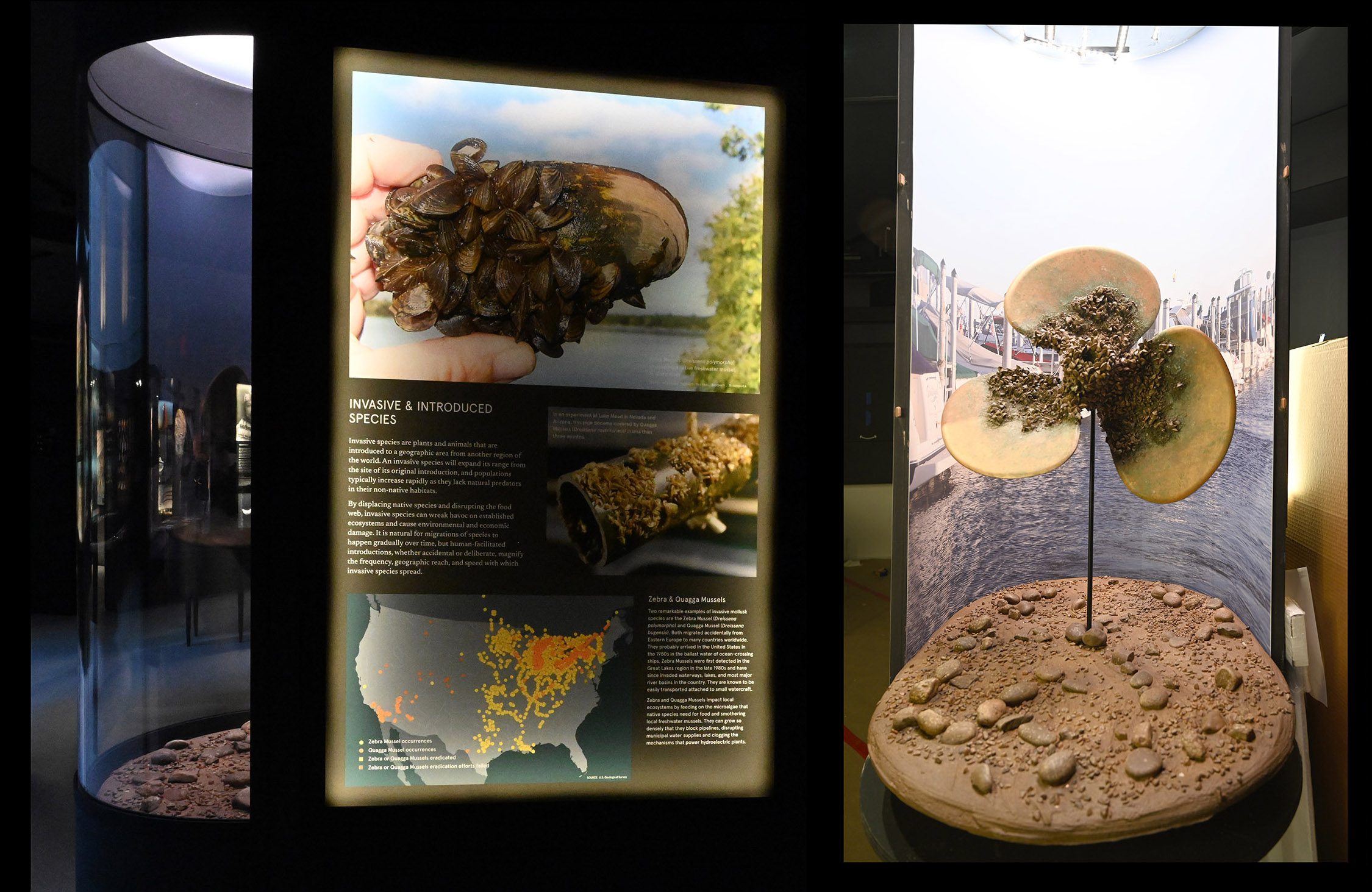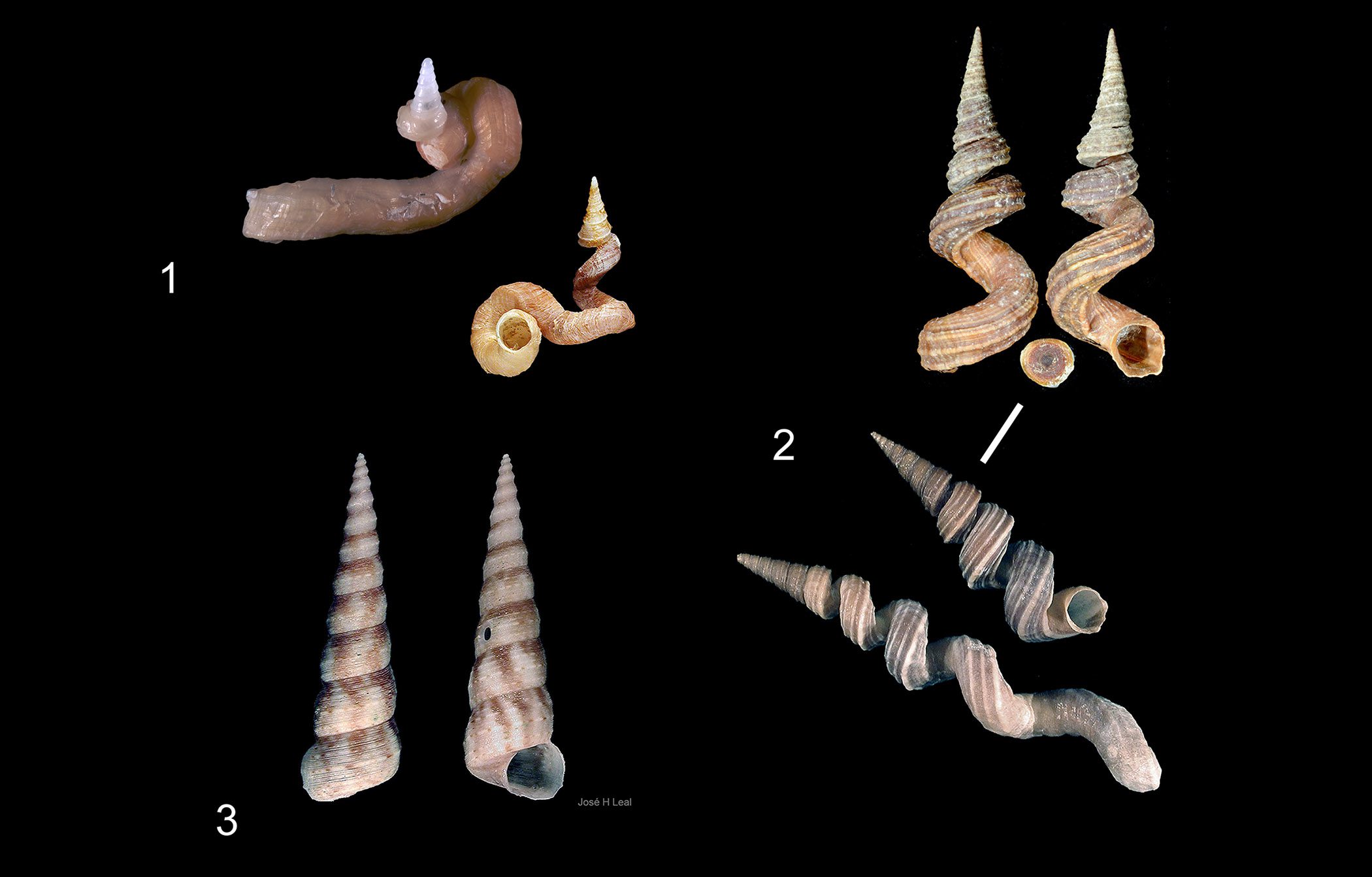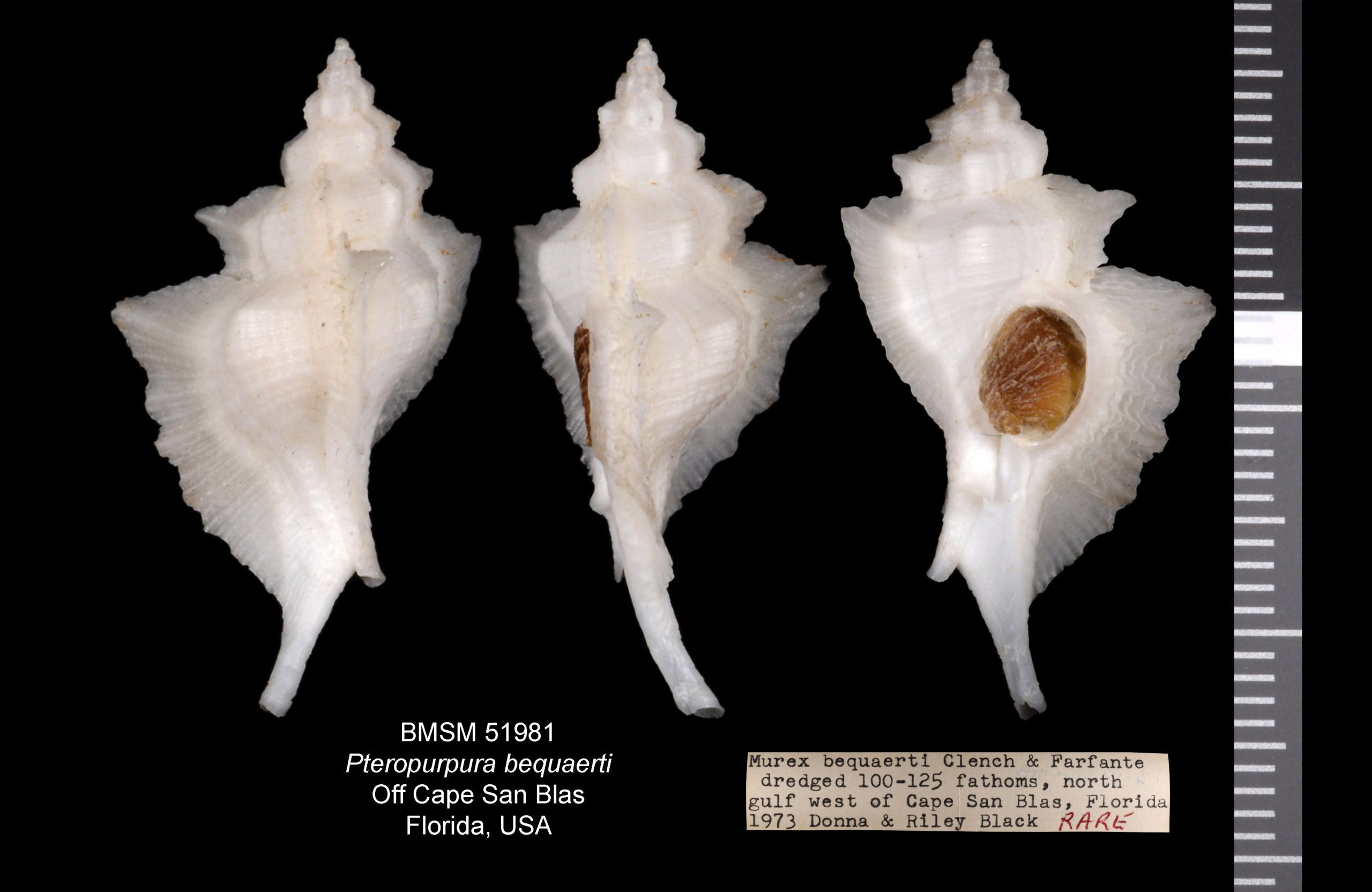The Museum’s Founding Director, Robert Tucker Abbott, was certainly the most prolific author of shell and mollusk-related books that ever lived, having published more than 30 books on the subject. Some of his most popular works such as Seashells of the World (1962) and Kingdom of Seashells (1972) have been in print since their original publication and were translated into many languages. A couple of years ago Tucker’s daughter Cynthia Sullivan donated a small collection of some of his more obscure works and rare translations to the Museum library.
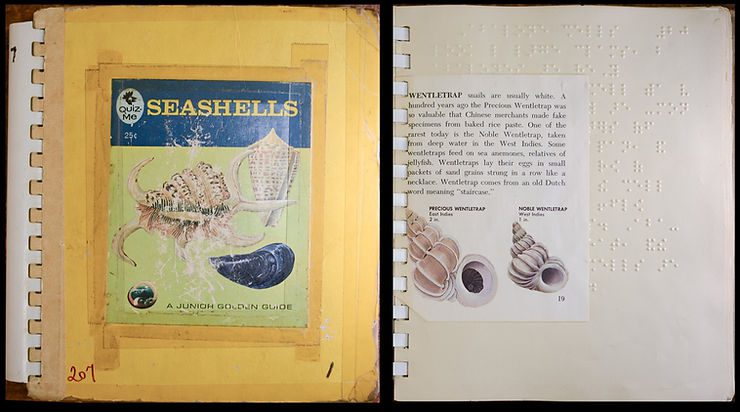 Cover and selected page of the Braille version of Tucker’s Seashells.
Cover and selected page of the Braille version of Tucker’s Seashells.
The gift included a Braille (the special tactile alphabet used by vision-impaired people) rendition of Seashells, a 48-page, 4×5” volume published by the Golden Press as part of the Junior Golden Guide series. I was captivated when I first saw that one-of-a-kind book. The Braille copy was produced at some point in the 1960s by the Twin Vision Publishing Division of the American Brotherhood for the Blind (now called the American Action Fund for Blind Children and Adults), in Tarzana, California. The Twin Vision program was established in 1962 by Jean Dyon Norris to provide, via selected libraries and at no cost, Braille versions of popular books to blind adults and children.
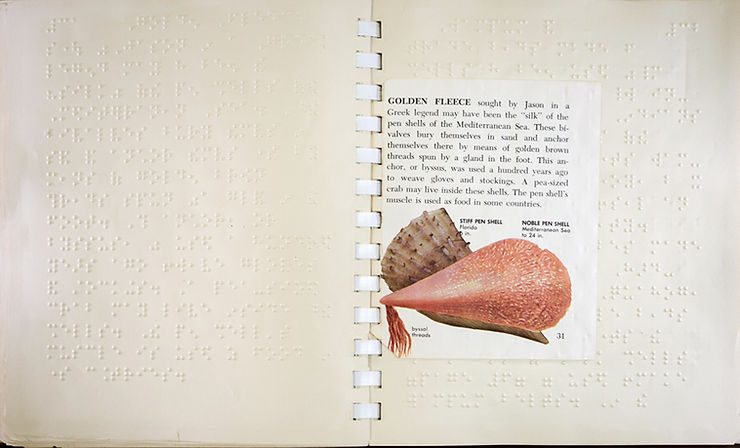 Selected page of the Braille version of Tucker’s Seashells.
Selected page of the Braille version of Tucker’s Seashells.
In my search for more facts about that remarkable, hand-made Braille volume, I found this illuminating passage by Gary Wunder in the website of the National Federation of the Blind: “[Jean] Norris okayed transcribing Sea Shells [sic], by R. Tucker Abbott, an authority on shells. Someone saw the book and notified the author, who wrote to Norris. He was very upset and wanted to know for how much they sold their version of his book. She responded, explaining that the book was loaned free of charge and that it was being used to teach blind children about sea shells. She received a second letter in which the author displayed a much different attitude: “How wonderful! How many copies of the book do you want? Could I please have one for my library?” After she sent him a copy he wrote again, praising the Twin Vision version.” Thanks to all involved and Cynthia Sullivan’s generosity, that unique and very meaningful version of a classic shell book is now in the Museum library!
